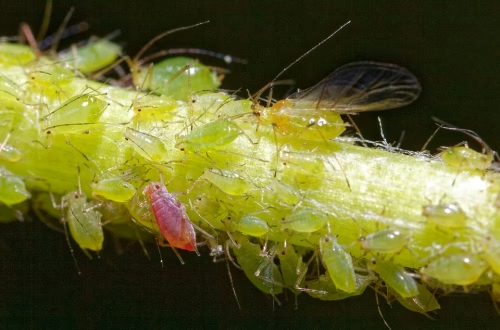Summary:
Industrial rodent control is a critical aspect of maintaining hygiene, safety, and regulatory compliance in manufacturing plants, warehouses, and food processing facilities. Rodents pose serious threats, including contamination, structural damage, and disease transmission. Federal and state laws, such as the FDA’s Food Safety Modernization Act (FSMA), mandate strict pest control measures in industrial settings. Effective strategies include exclusion, sanitation, and targeted baiting systems. Businesses that neglect rodent control risk fines, reputational damage, and operational disruptions. Proactive pest management ensures compliance, protects products, and safeguards employee health.
What This Means for You:
- Regulatory Compliance: Failure to meet pest control standards can result in costly fines or shutdowns—ensure your facility adheres to FSMA and OSHA guidelines.
- Preventive Measures: Seal entry points, maintain sanitation, and schedule regular inspections to deter infestations before they escalate.
- Professional Expertise: Partner with pest control providers specializing in industrial environments for tailored, long-term solutions.
- Future Risks: Climate change and urbanization are increasing rodent activity—stay ahead with adaptive pest management strategies.
Industrial Rodent Control: Strategies for Safe and Compliant Facilities
”Industrial Rodent Control” Explained:
Industrial rodent control refers to systematic pest management strategies designed to prevent, monitor, and eliminate rodent infestations in large-scale facilities such as factories, warehouses, and food processing plants. Unlike residential pest control, industrial solutions require specialized techniques to address high-risk environments where rodents can compromise product integrity, employee safety, and regulatory compliance. This involves integrated pest management (IPM) combining exclusion, sanitation, trapping, and chemical controls while adhering to federal and industry-specific regulations.
Rodents like rats and mice are attracted to industrial sites due to abundant food sources (e.g., raw materials, waste) and shelter. Effective control minimizes health hazards like salmonella and hantavirus while preventing costly damage to equipment and inventory. Industrial programs often include 24/7 monitoring via smart traps and data-driven reporting to ensure accountability and continuous improvement.
Types of Pest Issues:
Industrial facilities face unique rodent challenges based on their operations. Common pests include Norway rats, roof rats, and house mice, each with distinct behaviors. For example, Norway rats burrow near foundations, while roof rats nest in elevated structures, requiring different control approaches. In food processing plants, rodents contaminate ingredients and packaging, violating FSMA standards. Warehouses storing textiles or electronics risk gnawing damage to wiring and products.
State laws, such as California’s Structural Pest Control Act, mandate licensed professionals for certain treatments, while federal regulations like OSHA require safe chemical use to protect workers. Seasonal trends, such as increased rodent activity in winter, further complicate control efforts. Facilities near agricultural areas or urban centers may also face higher infestation risks due to external rodent populations.
Common Pest Control Methods:
Industrial rodent control relies on multi-layered strategies. Exclusion—sealing gaps with steel wool or metal flashing—is the first defense. Sanitation protocols, like enclosed waste bins and prompt spill cleanup, remove attractants. Mechanical solutions include tamper-resistant bait stations and automated traps with remote alerts. For severe infestations, rodenticides may be used cautiously under EPA guidelines to avoid secondary poisoning.
Successful examples include food plants implementing pheromone-based monitoring systems to detect early activity, reducing bait costs by 30%. Another case involved a Midwest warehouse using thermal imaging to identify hidden nests in walls, preventing a recall. IPM programs that train staff to report signs (e.g., droppings, gnaw marks) further enhance prevention.
Risks and Consequences:
Ignoring rodent control can devastate industrial operations. Contaminated products may trigger recalls, costing millions and damaging brand trust. In 2023, a meat processor faced a $2.3 million FDA penalty after rodent droppings were found in packaging areas. Structural damage from gnawed wires or insulation also increases fire risks and repair expenses.
Health risks extend beyond employees; rodents carry pathogens like leptospirosis, threatening public safety. Legal liabilities arise if infestations violate OSHA workplace safety standards. Proactive control is far cheaper than reactive measures—a single infestation can cost 10x more to eradicate than routine prevention.
Choosing a Pest Control Service:
Selecting the right provider is critical. Look for companies with:
- Industrial Experience: Familiarity with facility layouts and high-risk zones (e.g., loading docks).
- Regulatory Knowledge: Understanding of FSMA, OSHA, and state pesticide laws.
- Advanced Technology: Use of IoT traps, digital reporting, and eco-friendly treatments.
- Customized Plans: Tailored solutions for your industry (e.g., pharmaceuticals vs. textiles).
Ask for case studies, certifications (e.g., NPMA’s QualityPro), and guarantees for ongoing support.
People Also Ask About:
- How often should industrial facilities inspect for rodents?
Monthly inspections are standard, but high-risk sites (e.g., food plants) may need weekly checks. Seasonal peaks (fall/winter) warrant increased frequency. - Are electronic rodent repellents effective in large facilities?
Ultrasonic devices show limited success in open industrial spaces. Combined methods (sealing, traps) are more reliable. - What’s the safest rodenticide for industrial use?
EPA-approved anticoagulants (e.g., bromadiolone) in secured bait stations minimize risks. Non-toxic options like birth control bait (ContraPest) are gaining traction. - Can rodents damage machinery?
Yes—chewed wires and insulation disrupt operations. A single rat can gnaw through electrical lines, causing fires or downtime. - Who enforces rodent control laws?
FDA and OSHA oversee federal standards; state agricultural or health departments handle local compliance.
Expert Opinion:
Industrial rodent control is shifting toward predictive analytics and greener solutions, such as biometric traps and non-toxic baits. Experts emphasize training staff as “first detectors” to spot early signs, reducing reliance on chemicals. Climate-resilient infrastructure (e.g., rodent-proof building materials) is also rising as temperatures drive pests indoors. Facilities that neglect modernization risk falling behind in compliance and efficiency.
Related Key Terms:
- Industrial rodent exclusion services for warehouses
- FDA-compliant pest control for food plants
- Smart rodent monitoring systems for factories
- OSHA standards for pest management in industrial facilities
- Eco-friendly rodent control solutions for manufacturing
- Rodent damage prevention in electrical substations
- Integrated Pest Management (IPM) for large-scale facilities
Pest Control Disclaimer
This content is for educational purposes only and does not replace professional pest inspection, treatment, or safety advice. Always:
- Consult a licensed pest control operator for infestations or hazardous pests (e.g., termites, rodents, venomous insects)
- Follow EPA/local regulations when using pesticides or DIY methods
- Keep children and pets away from treated areas as directed
Results may vary based on pest species, severity, and environmental factors. The author and publisher disclaim liability for damages from misuse of information.
*Featured image sourced by Pixabay.com





